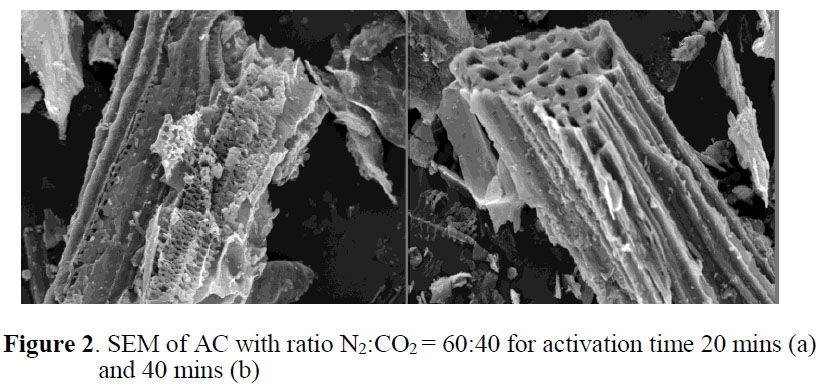Activated Carbon from Bagasse for Syrup Decolorization as an Alternative for Waste Management and the Assessment of Carbon Footprint
Main Article Content
Abstract
The aims of this research were to produce activated carbon from sugarcane bagasse using carbon dioxide as an activating agent for syrup decolorization and to calculate its carbon footprint as an alternative waste management method. Sugarcane bagasse was prepared from carbonization process with a nitrogen flow rate of 0.2 L/min at temperatures of 500°C, 550°C, and 600°C for 20, 40, and 60 mins., respectively. A carbonization condition of 550°C for 40 mins was used to activate the sample with nitrogen and carbon dioxide at a temperature of 800°C. Activation time and ratios between nitrogen and carbon dioxide were compared to the existing chemical resin method for syrup decolorization. ICUMSA method was used at temperatures of 70°C-75°C and a pH of 7. Carbon footprint of 0.5 g activated carbon for syrup decolorization was 1.51 kgCO2-eq and 66% of carbon footprint value come from utilization step.
Article Details
How to Cite
Nachat, N., Tobarameekul, P., & Worathanakul, P. (2014). Activated Carbon from Bagasse for Syrup Decolorization as an Alternative for Waste Management and the Assessment of Carbon Footprint. Environment and Natural Resources Journal, 12(2), 66–73. Retrieved from https://ph02.tci-thaijo.org/index.php/ennrj/article/view/71216
Section
Original Research Articles
Published articles are under the copyright of the Environment and Natural Resources Journal effective when the article is accepted for publication thus granting Environment and Natural Resources Journal all rights for the work so that both parties may be protected from the consequences of unauthorized use. Partially or totally publication of an article elsewhere is possible only after the consent from the editors.
